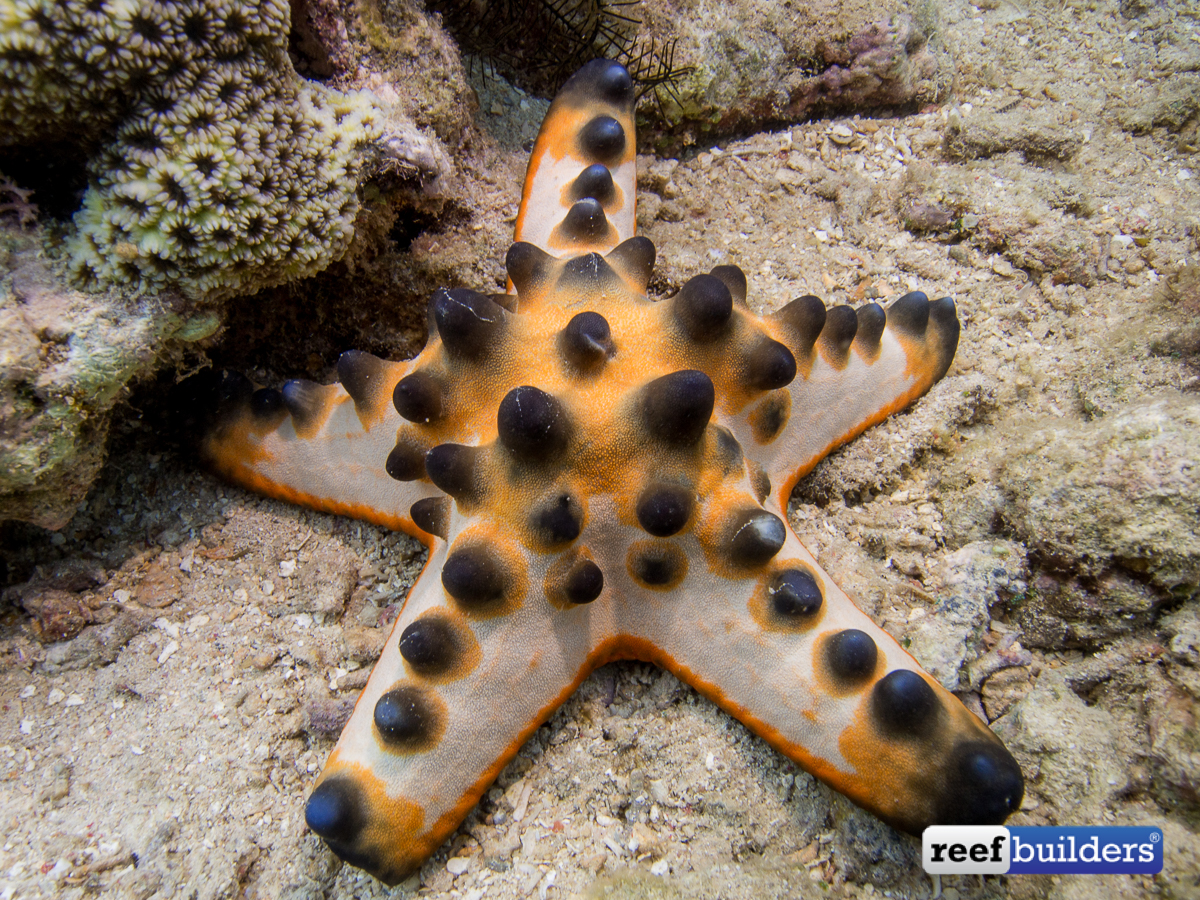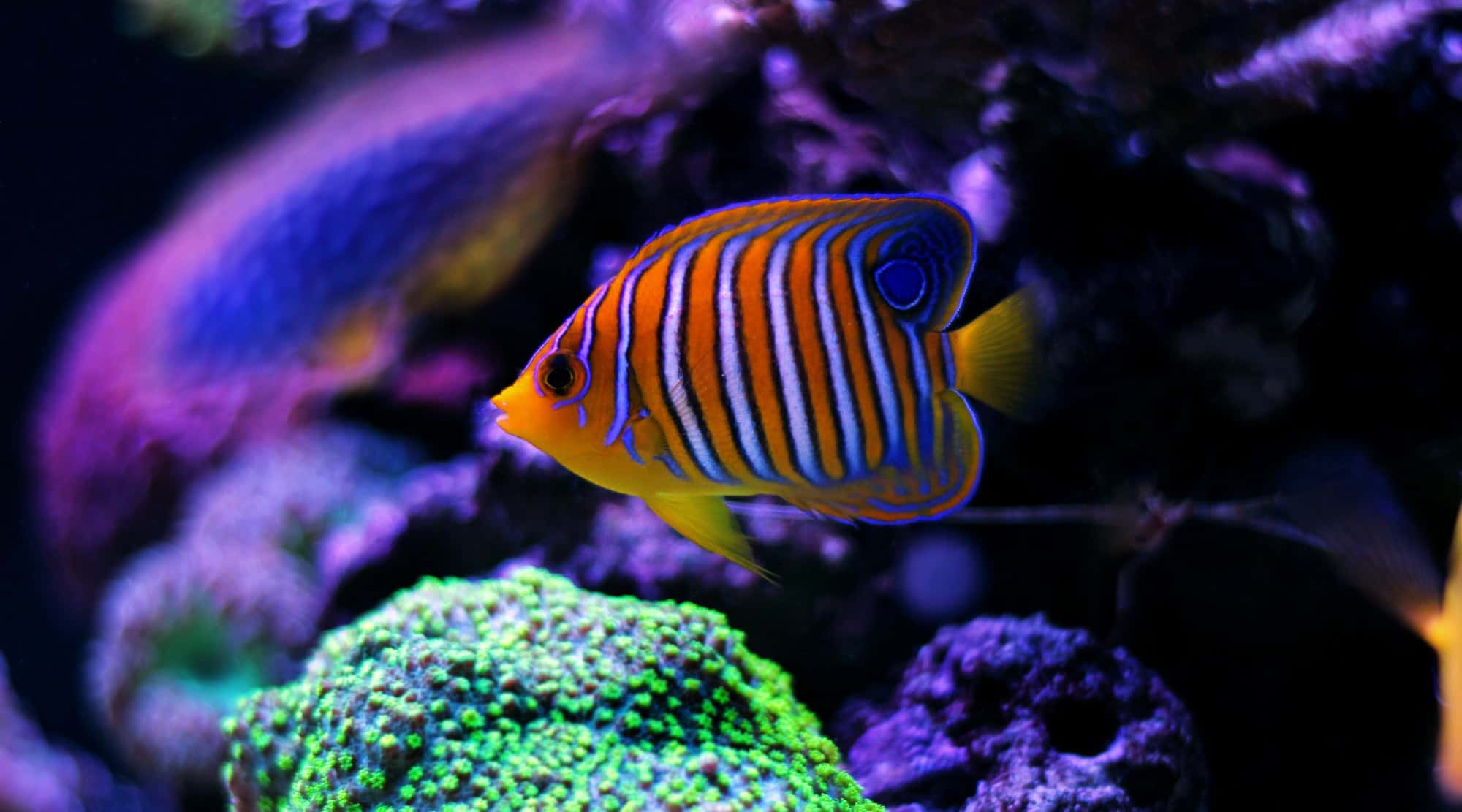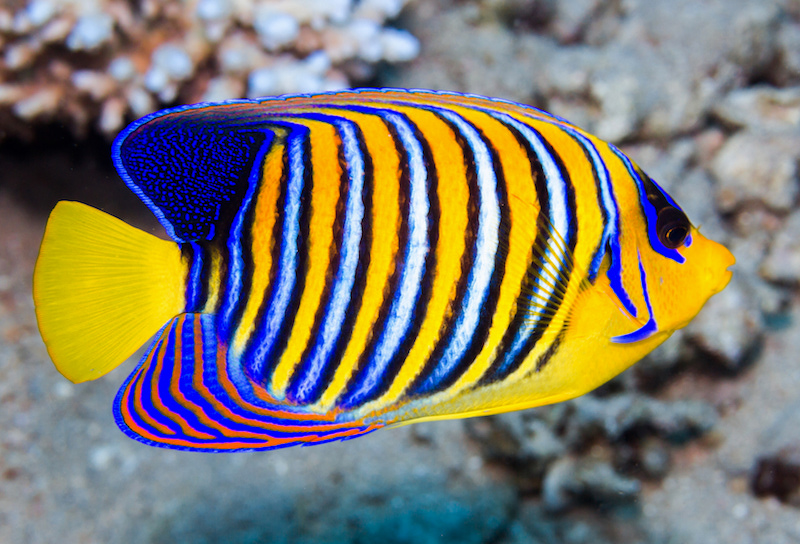For many decades, the quintessential Chocolate Chip Starfish, Protoreaster nodosus, has graced our FOWLR (fish only with live rock) tanks and refugiums with their magnificent spines and bright colors. Short-spine stars, Echinaster spinulosus, while less common, have been around just as long, along with a wide array of other carnivorous echinoderms such as Pencil Urchins, Eucidaris tribuloides, and the dreaded Giant Green Brittlestar, Ophiarachna incrassata.
Unfortunately, many of these animals are sidelined by aquarists in favor of the corals, clams, and small fish that these species readily feed upon, forcing them to be sequestered to the dark corners of the sump after the first incident. But I believe these animals have great potential as display creatures due to their bright colors, unique commensal behaviors, and extreme feeding responses.
Starfish-dominant systems have been around for decades in public aquaria, with carnivorous stars being some of the first animals (along with intertidal anemones and gobies) to be kept and displayed in the olden days of marine aquarium keeping. They are hardy, beautiful animals that are often found intertidally, leading to far greater resistance to parameter swings than the reef crest species seen on occasion. They readily consume commercially available fish foods in addition to fresh seafood (and the occasional snail) and make quite a show out of it in the process.
Public aquariums such as the Georgia Aquarium and Aquarium of the Pacific have dedicated exhibits to large cold-water species of star, like Pisaster brevispinus and Asterina miniata. These exhibits are popular despite a low number of fish in both, with the stars being accompanied by Black Rockfish at the Georgia Aquarium that blend into the rockwork and seem to move less than the stars themselves.
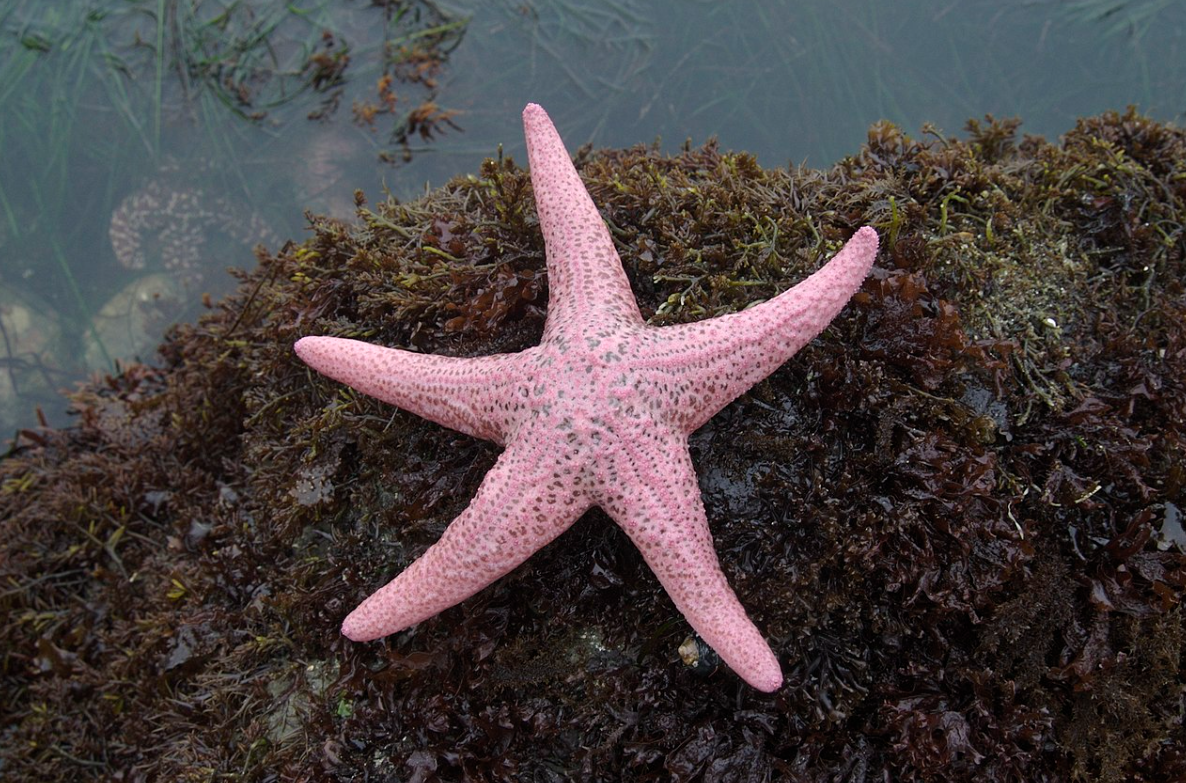
How to keep carnivorous starfish
Luckily, and unlike many of the other strange animals discussed on the blog, carnivorous stars are fairly simple to keep alive and healthy, and won’t cost you an organ to get a good variety of species and colors.
Pretty much any basic marine aquarium will work, as long as it has adequate live rock and shelter for the animals while they acclimate to the aquarium. I have kept chocolate chip stars in tanks as small as 10 gallons, and since they eat prepared foods instead of biofilms like other ornamental stars, it was incredibly easy to keep them fed. I currently keep my predatory stars in the sump but will be moving them to their own 40 breeder this summer so they can be on display with my other animals.

Water stability is key with all echinoderms. A salinity swing of even a few parts per thousand can spell death for a star, and a smaller tank will of course fluctuate more if there’s not an Automatic Top Off on the tank. I keep my echinoderm tanks at full ocean strength salinity, between 1.025-1.026 specific gravity or 35-36 parts per thousand. Alkalinity, calcium, and magnesium should likewise be kept at normal levels, as stars will use these elements to build their skeletons. Nitrate and phosphate should stay around normal reef levels. Efficient protein skimming and/or frequent water changes are a must due to how much these animals must be fed.
For feeding, I like using fresh meat. I have tried many foods with good results but usually end up using krill, thawed squid, or fresh salmon. I have fed many commonly available fish pellets & flakes, but these are a hassle to feed due to their buoyant nature and usually end up in the filter. I have recently experimented with boiled egg yolks in attempts to encourage Oogenesis in my Tosia stars, and they seemed to love it.
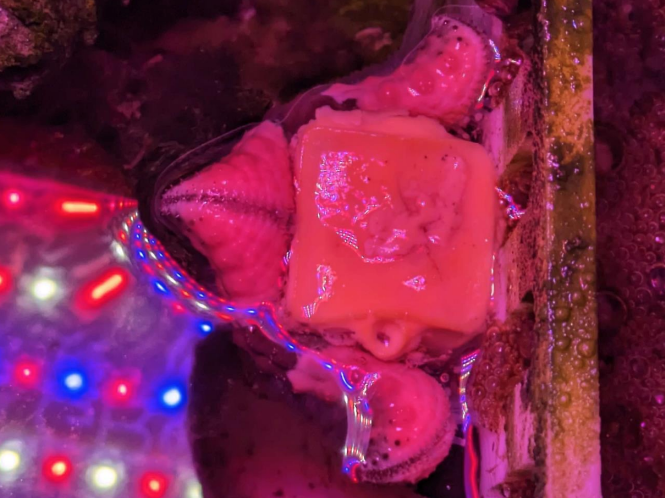
The most important factor with feeding is that you feed heavy & often; starfish do not store food in their stomachs and must constantly eat to keep up with bodily demands. A good rule of thumb is about one-quarter the oral disc’s size in fresh meat every other day. This will keep more opportunistic stars like the Chocolate Chips from making a meal out of their brethren.
When it comes to tankmates, we are a bit restricted. Most snails and hermits are out of the question; Echinaster are particularly good at finding and dispatching them. Thus, algae control should be maintained by larger urchins or fish such as starry blennies that can avoid the stars. It is a wise idea to keep some small fish in the tank, like damsels or dartfish, to eat leftover food; this job could also be taken by brittlestars and cucumbers if you wanted to make a 100{a47be734f0df8d7f120a7df290cf380c79376e8356d1aab405383bb23aa6ce67} echinoderm environment, which could be pretty cool to see.
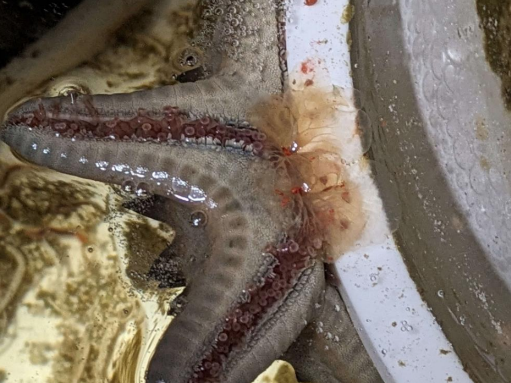
Ornamental algaes, hard corals, and clams are of course not viable, however, some species of anemone, such as the Bubble Tip, Entacmaea quadricolor, while still at risk, are less likely to be eaten. Leather corals are very unlikely to be dined upon, but there’s always a risk. Shrimp and crabs are safe from predation, and some species of shrimp in the genus Periclimenes will live commensally with starfish, urchins, and cucumbers.
As more people keep stars, we may breach the walls of captive breeding with species like the Chocolate Chip, whose populations are at threat in their native range due to the seashell trade. There are some species, such as Tosia neossia, which gives birth to live young that follow the mothers around in tiny herds. Who wouldn’t love to see that in their aquarium?

In the end, Echinoderms are absolutely amazing animals that often fail to take the spotlight due to their destructive, or sometimes elusive, feeding habits. An echinoderm tank is a very simple ecosystem with some unique, but key challenges that bring their own unique rewards, and allow these fascinating and underrated animals to take the spotlight.

